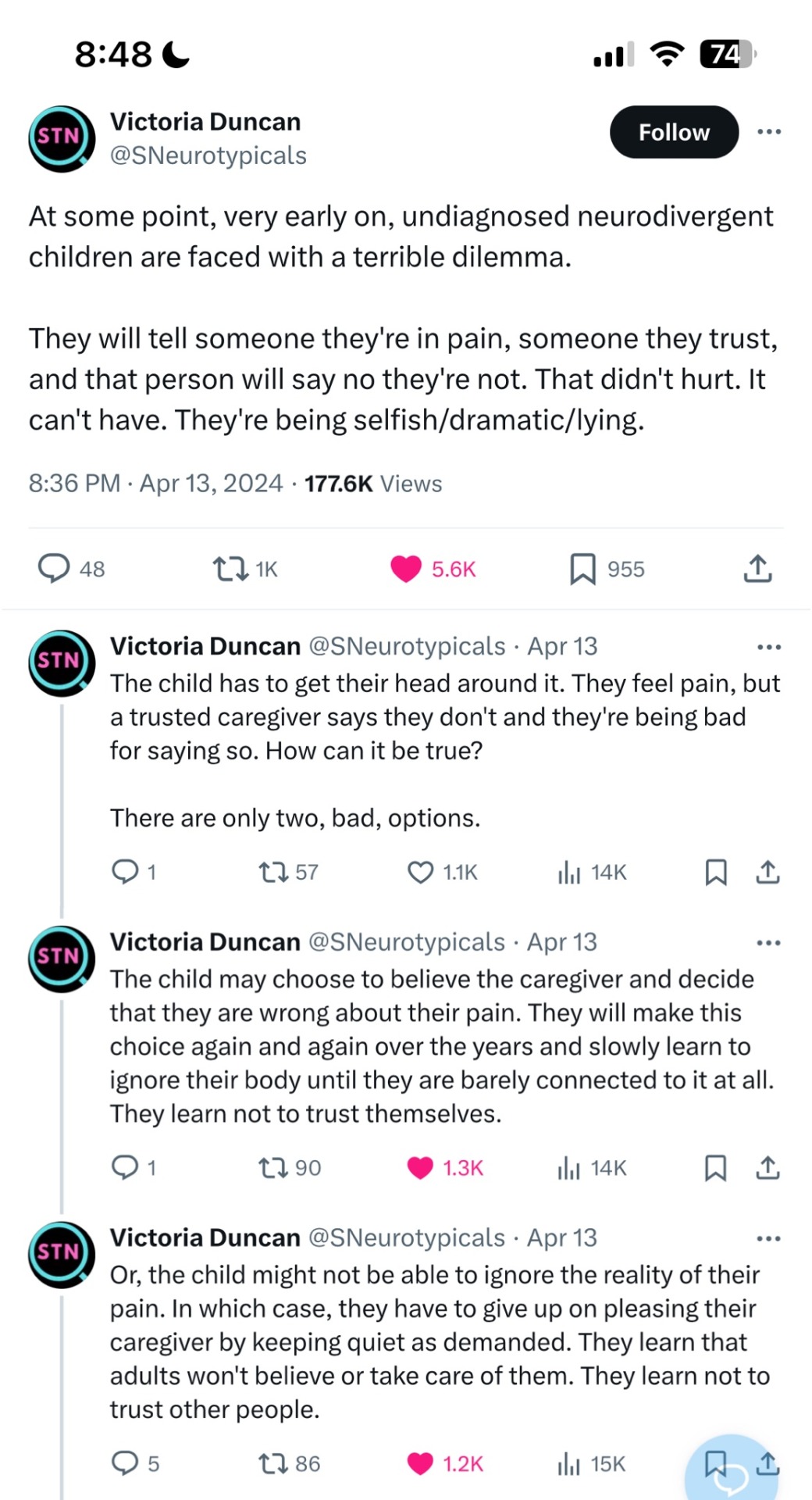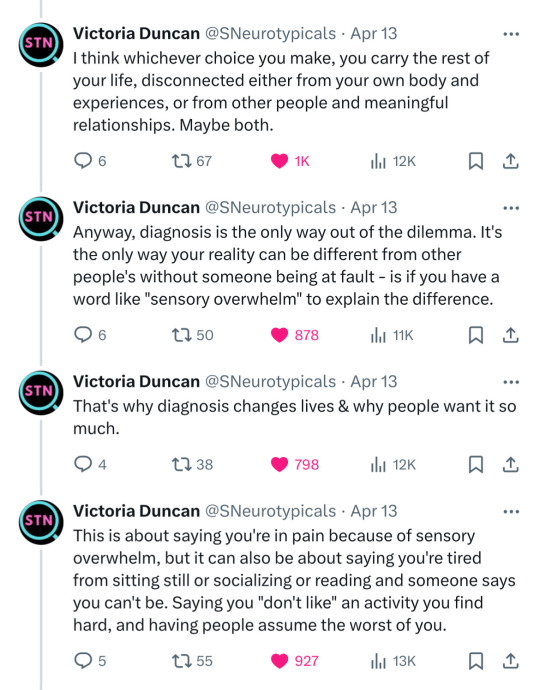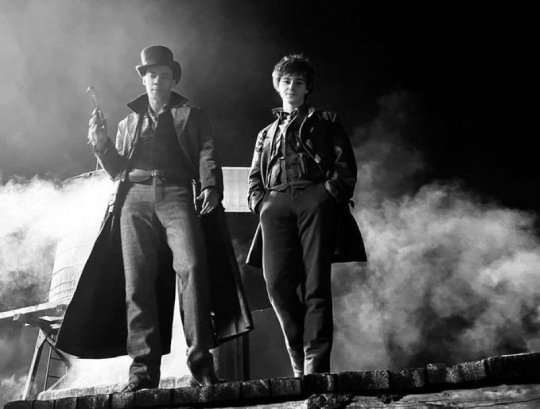Text
i know i yap about this a lot on this site but the way leigh bardugo writes jan van eck as an abuser is so so accurate and i love her for it. she did not have to go into such realistic depictions of the abuse wylan suffered---she really could've been like "eh yeah he's a shitty father and wylan is traumatized send to publisher." but doing it her way instead creates such a deeper character. she really understands how abuse like that works and it shows. having jan van eck use "logic" against wylan in addition to violence really adds the detail we need to understand how awful of a person he is, as well as understand why wylan thinks and acts the way he does. it makes the whole story of wylan hurt so much more and creates a way stronger character than one without such fleshed out trauma. it's also incredibly realistic to how, in real life, an abuser like that gets inside your head and manipulates you into believing certain things about yourself. all in all the more i think about it the more i appreciate leigh's writing and her attention to detail and realism. it's things like that that really elevate her writing.
409 notes
·
View notes
Note
Saw you said you were seeing Harold Fry last Saturday. Would love to know your thoughts!
Omg hi!
So yes I booked this production because of Jack Wolfe's casting, but I also recently finished reading the book, thoroughly enjoyed it, and was looking forward to seeing how they’d adapt it.
First time going to Chichester for a show and it felt perfectly suited to its venue. It's a lovely, intimate theatre surrounded by greenery. If you know your UK regional producing theatres, it reminds me of the Watermill in Newbury but designed with far better sight-lines and though still intimate, less 'snug'! There's room for actors and audience to breathe haha.
I think maybe the Balladeer role could have been better clarified. He’s in this odd space as the show stands at the moment, where he begins the show, but is a narrator, has small interactions with Harold but not with any other character, until he suddenly turns on Harold.
I think because we’ve seen Jack in a role like this before, it gets away with it, but I don't know if the act 1 ending plot twist works as it stands.
This is also because the musical decides on an act 1 end plot twist, which doesn’t actually feel like much of a twist. Maybe because it’s two twists in one— Jack is not only the narrator, but also Harold’s son, who is dead, it’s maybe too much information at once? In the book the fact that David is dead and has been the whole time is revealed only very near the end, and I think the show could have been worked to have David’s death revealed in ‘Dear Girl in the Garage’.
I wish there were more interactions between Jenna Russell and Jack. I loved their duet of Beautiful in Sondheim on Sondheim, and it feels odd that yes, she has her own character arc, but she feels quite secondary. I actually think if Jack as Balladeer responded when Maureen talked to David might've sorted out a few issues. I love that the Balladeer is on stage for almost the entirety of Act 1, but I think more could've been done.
I loved the fleshing out of David. I of course (because I'm me and I record nearly every show I see!) recorded audio and ended up exporting the individual songs onto my apple music, but I keep having such an urge to relisten to more of Jack’s straight acting. Scene about his parents missing his graduation, devastatingly flippant. The disappointment he’s concealing.
And ‘where is it then? All this everything.’ Which I've realised Jack intones differently in my recording than the other audio.
I prefer it this way. David's characterised by this forced flippancy. He's very honest, but maybe afraid of coming off too sincere? So he talks like it's all a joke.
But yes, ultimately I got everything I wanted out of the show. It's a near-perfect adaptation, and I think even my issues could be reworked if it had a future life (maybe uk tour if not a London transfer?).
Jack was lovely at stage door. Came out much later than everyone else and seemed pleasantly surprised and humbled that people were waiting. He came out, saw the (four haha!) fans waiting and immediately apologised saying he didn't realise anyone was waiting. He’s also well aware and can find humour in the incredibly specific type casting that’s happened haha.
79 notes
·
View notes
Text
Harold Fry show notes
Disclaimer: this WILL contain quite significant spoilers if you don’t already know the show beware. But at the same time I also don’t explain the plot. So…it’s a mess
This will also be rather Jack Wolfe heavy but I make no pretences as to why I went to see this in the first place
- Show opens with Jack (the Balladeer) standing over Harold. They have the flower crown and the baggy knit sweater that you see in the curtain call pics and a guitar. He opens with a ballad and is introduced as the narrator or at least a figure that breaks the fourth wall and observes the story and sings it like a minstrel would
- The Balladeer also leads the ensemble for this song and there’s some very cool choreography. Not complex but very effective
- The whole opening is very Midsummer Night’s Dream vibes
- To quote an elderly lady I heard in the foyer after the show Jack is “absolutely mesmerising” and I agree. Especially in this opening number his stage presence was so strong and his movements so fluid it was incredible I genuinely cannot put it into words or explain it it was just nuts
- Main plot then begins with Harold starting his walk, and the Balladeer going along with him but at this point (other than some ensemble choreo, set rearranging etc.) no one acknowledges or interacts with him so he appears to be for the sake of the audience
- Also the guitar and the falsetto and the folk music vibes Jack Wolfe Orpheus WHEN???
- The little dog puppet that appears is ADORABLE. Maybe I’m just a wuss but omg it doesn’t even have to be a real dog for me to melt. Kudos to the puppeteer because there wasn’t a single moment where that dog was stationary and not doing doggy stuff (at one point it was just gnawing on Tarinn’s shoe and it was so sweet)
- Harold meets some interesting characters along the way and there’s some fun songs
- He also seems to deteriorate little by little, and starts telling stories about his son who he has “failed” - how he ran into the sea one time and had to be rescued, how he went to Cambridge Uni etc.
- Harold’s wife Maureen feels incredibly betrayed that he has left, and through their phone conversations we see the strain in their marriage that seems to have been there a long time
- Sister Philomena’s solo was so so beautiful
- Towards the end of act 1 another character called Wilf appears and asks to join Harold on his “pilgrimage”. He’s played by Tarinn Callender who was fantastic. Has such big, warm stage presence if that makes sense. He’s so funny and brings so much heart to the scenes
- At this point, the Balladeer suddenly flips, gets incredibly agitated and starts to directly try and talk to Harold to shut down the idea. When Harold ignores him and allows Wilf to join, the Balladeer literally goes to punch something (just hitting the air because stage safety we don’t want Jack breaking a knuckle or something) and genuinely roars with anger. Both characters hear this but pass it off as a fox
- Like huh, not just an omniscient narrator then that’s a bit funky
- Also, all through this role is the most aggressive, angry acting I’ve seen Jack do
- The Balladeer disappears
- More people come to join Harold’s journey and there’s some lovely joyful ensemble work of them all having fun together
- Midway through, the Balladeer appears again but this time on top of the barrels at the back of the stage so looming over the scene. He’s now wearing a tank top and carrying a Cambridge college scarf, and starts off crouching (the flower crown however stays on for the whole show)
- He starts to sing to Harold but the whole vocal style has changed from folky mix and falsetto to very chest-dominant and forceful. He fully turns on him, standing over the whole scene, putting on his scarf and becoming incredibly domineering and quite aggressive. Through the song he climbs down to the stage, whirls through the dancers and lunges at Harold in what kind of looks like a hug but is more like a tackle or a headlock. Harold looks like he’s choking. The Balladeer then flings himself away from him, drops his scarf into Harold’s hands and bolts off stage to Harold yelling after him and revealing that this is his son David
- End of Act 1
- I have explained this bit very badly but I’d say listen to the audio that someone was kind enough to post at the start of the week to get a sense of it it was SO effective the way the whole character changes
- Act 2 opens with the walk continuing, and Harold enjoying the company of the people with him, but also becoming increasingly troubled by flashbacks of previous interactions with his son
- Rather than being onstage the whole time like in Act 1, David now only appears at these moments. He’s now dressed in black with his Cambridge scarf, and at one point his graduation robe
- Jack’s dialogue is so well delivered the raw emotion in their performance aaaaaaa
- Harold’s wife Maureen sings a lovely solo reminiscing about how they met, and her confusion over how their marriage has turned out and whether she made the right decision to stay. During this two ensemble members take the roles of their younger selves meeting at a barn dance and it is so romantic and sweet
- Upon finding Wilf holding a packet of pills, Harold is launched into a flashback of a conversation with David, six months out of Cambridge, living at home and taking drugs. Throughout their interaction David is snide and taunting, mocking his father for being less intelligent than him, but gradually becoming more and more agitated. Eventually he breaks down completely, launches himself sobbing at Harold yelling at him to “fucking help me”, grabs him in the same way he did at the end of act 1. Harold pushes him away and he falls onto the floor, then flees offstage
- Wilf is understandably freaked out, reveals that the pills are for hayfever and is so betrayed that Harold would think he would relapse into drug use that he leaves
- Harold decides to leave the group and continue on his own
- He gets caught in a storm where David appears again, this time at the top of a large iron staircase, again looming over him. He launches into a song about all the ways Harold let him down, gradually descending down the staircase towards him
- Ensemble members hitting the stage with huge black feather beaters to mimic thunder was so effective
- Another flashback in which Harold and Maureen are frantically yelling to each other that they can’t find David. He isn’t anywhere in the house. Harold calls out for him and the scarf falls from the ceiling to land on the floor. Maureen breaks down and runs offstage cradling it
- Harold is now completely falling apart. He goes into a cafe sobbing and telling the people there that he wants his son. While he’s there he writes a letter to the girl working in the garage who inspired him to begin his walk. In it he confesses that David didn’t simply leave as he has previously said, but committed suicide. This destroyed his and Maureen’s marriage and he feels he can never come back from it. This performance by Mark Addy was absolutely gut wrenching and the lyrics for this song are so unbelievably heartbreaking
- “It’s the worst thing I have ever seen, and the first thing I see when I dream, so I don’t do much sleeping now, I just keep on wondering how I lost the only thing I can’t replace” ouch?????
- The girl brings the letter to Maureen and they have this lovely heartfelt conversation
- Harold completes his walk and says goodbye to his old friend. It was lovely how they had left such a mark on each other’s lives even though they only knew each other for a brief time and turned to each other when they hit the lowest point in their lives
- Harold sits down on the beach with David (now back in his Balladeer costume with the guitar). They have a short conversation and seem more at peace. Harold talks about how far he’s come, and David admits that he’s proud of him
- Maureen then joins Harold, having driven up (leaving the house for the first time since David’s death) to find him. They talk and resolve to move forward together
- During the final song they have a really sweet moment together, reminiscing about how they first met and paddling in the sea together
- The Balladeer leads the final song again, now much softer and friendlier
- Jack’s portrayal of David in this kind of reminded me of Aaron Tveit’s Gabe which was super interesting. There’s none of Jack’s Gabe’s insecurity, just raw anger, vengefulness and power. It was so cool seeing both performances in one day and how different Jack’s energy was for each
114 notes
·
View notes
Text






locklyle incorrect quotes (inspired by this post!) LOCKWOOD & CO. (2023)
2K notes
·
View notes
Text
Jack Wolfe and Caissie Levy sang Songbird together at his last show I’m sobbing 😭
17 notes
·
View notes
Text
For anyone who wanted my full Sondheim on Sondheim audio ✨
53 notes
·
View notes
Text

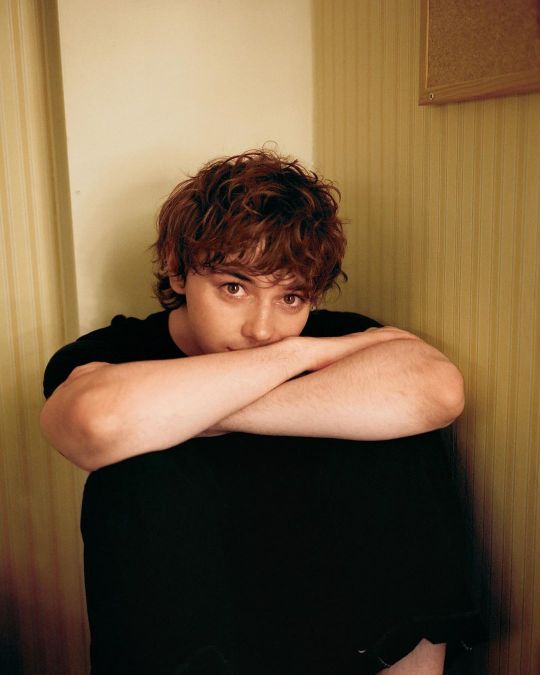




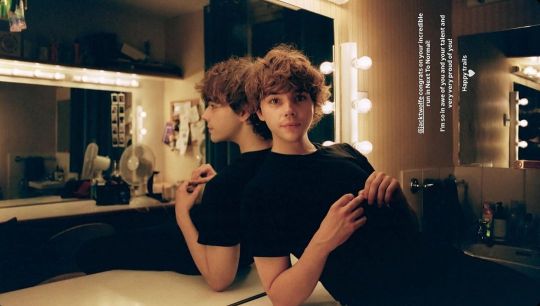
Jack Wolfe photographed by Emilia Staugaard Backstage at the Wyndham's Theatre
+ Bonus: Jack Wolfe photographed by Jack Wolfe

98 notes
·
View notes
Text
Actually the main reason Wylan let himself get beat up isn't to make it more believable it's actually because he wanted to prove to his father that he was more than a stupid kid because even after everything he went through he still desired his father to see his worth in any twisted way possible. In this essay I will-
195 notes
·
View notes
Photo
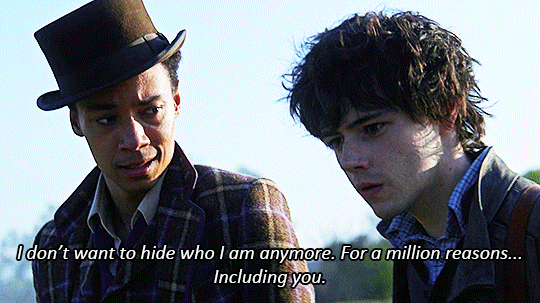
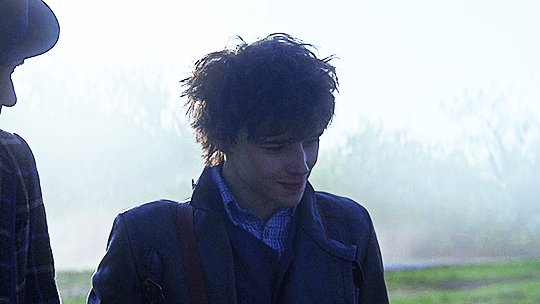
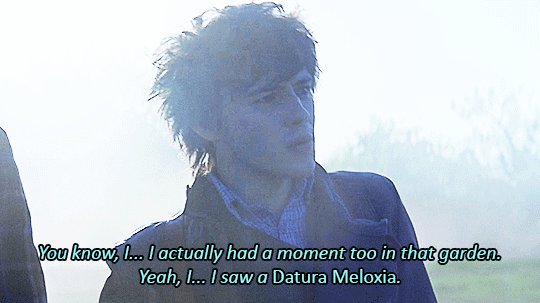
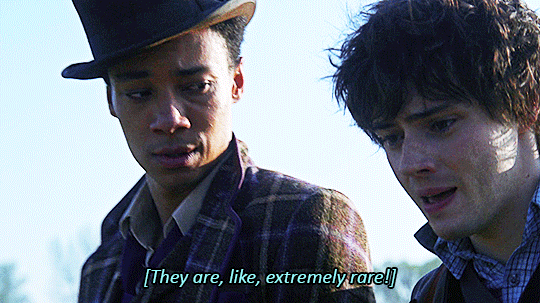
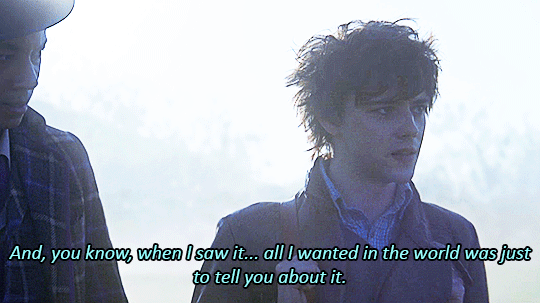
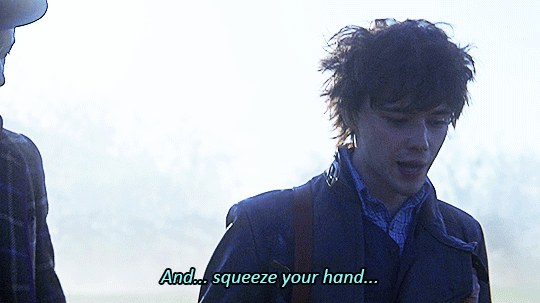
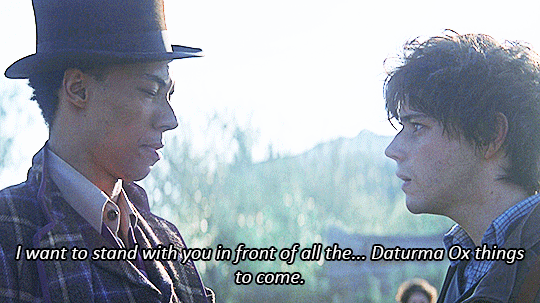
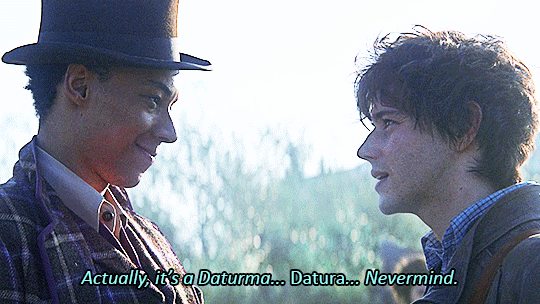
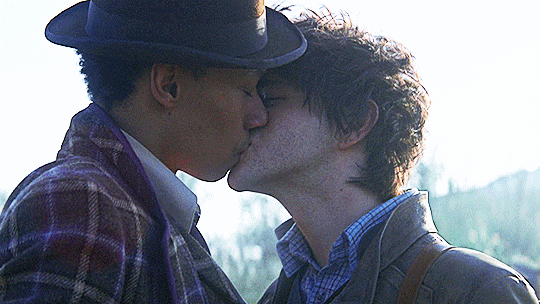
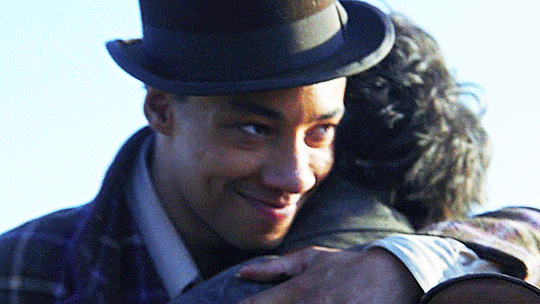
Jesper Fahey & Wylan Van Eck
Shadow and Bone (2021-) Season 2, Episode 6 “Ni Weh Sesh (I Have No Heart)”
3K notes
·
View notes
Text
What to ask for at a barber's shop, a butch guide
As promised, here's the ultimate butch guide to what to ask to your barber when asking for a specific haircut! A few premises: I'm not a barber, this means that everything you'll find in this post is purely based on my personal experience. If you're a barber and you see I explained something wrong, please correct me! I'll update the post asap. Furthermore, I won't cover up haircuts for black folks, because I'm not an expert on that topic, however I would love to link external and trustable resources on that so If any of you has them let me know and I'll add them! My intent is helping as many butches and studs as possible (: Second thing is that this post is more about short and really short haircuts, I won't talk about wolfcuts, middle part, mullets, however if you want I can make a post about them if requested! I think this is all I had to say, so let's start!
When visiting a barber, it’s important to know how to articulate what you want to ensure you leave with the perfect haircut. Understanding the difference between taper and fade, as well as the most common hairstyles that pair with them, can help you communicate effectively with your barber. Here’s what you need to know:
Understanding the Basics: Taper vs. Fade
Taper and fade haircuts are versatile and can be paired with various hairstyles, depending on the desired look. The terms "fade" and "taper" are often used interchangeably, but they refer to different haircut techniques:
Taper:
Subtle Transition: A taper gradually reduces the length of hair from the top down to the sides and back, but the change is subtle. When talking about "tapers," it's important to know that they can vary in style depending on how subtle or pronounced the transition is, where it begins, and how it complements the overall hairstyle.
Low Taper: The low taper starts lower on the head, around the ears or just above them, and gradually shortens down to the neckline. It offers a gentle, natural transition that’s less noticeable than other tapers
Mid Taper: A mid taper falls between the low and high taper, starting around the middle of the head. It offers a balance between subtlety and definition.
High Taper: The high taper begins much higher up on the head, typically around the temples. The hair shortens more quickly as it moves downward.
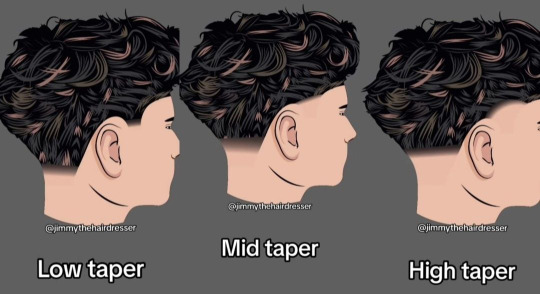
Tapers, source: Jimmythehairdresser on Tiktok
Fade:
Bold Contrast: A fade, on the other hand, involves a more noticeable transition where the hair gradually becomes shorter as you move down the head, often going down to the skin. As for the Taper, the fade starts at varying levels as well (low, mid, or high) depending on your preference.
Low Fade: The fade starts low on the head, just above the ears and around the nape of the neck.
Mid Fade: The mid fade starts slightly higher than the low fade, around the temple level.
High Fade: The fade begins high on the head, around the temples or forehead.
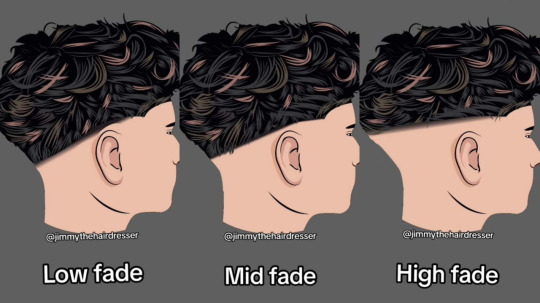
Fades, source: jimmythehairdresser on Tiktok
Bonus Fades:
Burst Fade: The burst fade creates a circular fade around the ear, leaving the hair longer at the nape. It resembles a "burst" around the ear, with the fade extending outwards.
Drop Fade: The drop fade follows the natural curvature of the head, "dropping" behind the ears towards the nape of the neck. It creates a more rounded silhouette compared to the straight line of a traditional fade.
The main difference between a fade and a taper is that the taper requires less maintenance. In order to keep the fade clean and neat you must go to the baber shop every two or three weeks.
Common Hairstyles to Pair with Tapers and Fades:
Once you’ve decided between a taper or a fade, the next step is choosing a style for the top. Here are some popular options:
French Crop: is a classic and timeless men's hairstyle characterized by short hair on the sides and back, with slightly longer hair on top that is usually styled forward. The defining feature of a French crop is its fringe (bangs), which is cut straight across the forehead or slightly textured, giving it a clean look.
Edgar: the most defining characteristic of the Edgar cut is its blunt, straight-across fringe (bangs). The fringe is cut very short and is typically styled straight down across the forehead. The sides and back are usually kept very short, often with a high fade or a sharp taper that contrasts significantly with the longer hair on top.
Textured Fringe: is a type of hairstyle where the bangs (fringe) are cut and styled to have a messy, layered, or choppy appearance, rather than lying flat or being uniformly cut. This style adds depth and movement to the hair. Sometimes is also referred as "fluffy" fringe on Tiktok.
Faux Mohawk: is a modern and versatile hairstyle that mimics the look of a traditional mohawk but is less extreme. Instead of shaving the sides completely as with a classic mohawk, the sides of the hair are kept shorter but not shaved, and the hair on top is styled to create the appearance of a mohawk.
Side Part: is a classic and timeless masculine's hairstyle that features a distinct parting on one side of the head, based on personal preferences or the natural hair grow pattern. The side part can be combined with different types of fades or taper with longer hair on top.
Slick Back: The defining feature of the slick back is that the hair is combed straight back from the forehead towards the back of the head. The goal is to create a smooth, uniform flow of hair. To achieve the slicked-back look, styling products like pomade, gel, or wax are typically used. The sides can be kept short with a fade or taper, creating a contrast with the longer hair on top.
Fringe Down: A fringe down hairstyle refers to a look where the bangs, or fringe, are styled to fall naturally down onto the forehead, rather than being swept to the side or styled upwards. The fringe can be cut in various lengths, from just grazing the eyebrows to longer, covering the forehead. The fringe down look can be combined with various fades, tapers or even longer sides, depending on the overall desired style.
Two Blocks: The two-block haircut is a hairstyle known for its distinct structure, featuring two contrasting sections of hair: a longer top section and significantly shorter sides and back. The style is versatile, easy to maintain, and can be adapted to suit various hair types and face shapes.
Styling:
When it comes to hairstyling, there are several key products that are commonly used to achieve different looks and hold styles in place. Each product has its own unique properties, making it suitable for specific hair types and desired outcomes. Here’s a breakdown of the most common styling products:
Pomade: Designed for more combed looks, such as side parts. It will give your hair a varied degree of shine and hold depending on the strength of pomade used. Pomade should be applied before you start styling your hair. It helps to shape and define the hair, making it easier to achieve your desired look by using a comb.
Wax: Hair wax is one of the most versatile hair styling products. Basically there are two types of hair wax, water based ones and oil based. It can give you a matte or high shine finish, depending on that.
Clay: Compared to Wax, Clay is usually dryer and a bit more stiff compared to a regular hair wax and that is what gives the product its hold and matte finish. For people with thinner hair a hair clay can be an option for some more volume when you apply it in damp hair before blow-drying.
Gel: Hair gel is somewhat similar to water based pomades. Both are relatively wet products, but hair gel is slightly wetter. The downside is that it is not very versatile. Furthermore, cheap hair gels are pretty chemically and they can leave white flakes in your hair when the product dries and you touch it too much.
Styling Powder: is a product you apply directly at your roots and then you piece it into your hair. This kind of product is great when you like to get some more volume in your hair and make it appear thicker and fuller. You hair will get more body, especially when you add it to your roots directly. Compared to other styling products, you need to apply them on already dry hair.
Sea Salt Spry: Sea salt spray mimics the effect of ocean water on hair, adding texture and volume for a beachy, tousled look. It’s ideal for creating casual, undone styles with a matte finish. It’s particularly popular for enhancing natural waves and curls.
Some final small tips:
When talking to a barber, clear communication is key to getting the hairstyle you want. Here are some final practical tips to help ensure you and your barber are on the same page:
Show a Picture: If you have a specific look in mind, showing a picture can be incredibly helpful, even better if it's a 360 video.
Ask for Advice: Your barber is an expert, so if you’re unsure, ask for their recommendations based on your hair type and face shape.
Mention Your Styling Routine: Let your barber know how much time you spend on your hair daily and what products you use. This helps in choosing a cut that fits your styling routine and maintenance preferences. Furthermore, if you have a specific lifestyle (e.g., active, formal work environment), let your barber know. This information helps them recommend a style that fits your day-to-day life.
Ask About Maintenance: Inquire about how often you should get the haircut maintained and any specific care instructions. This ensures you know how to keep your style looking its best.
Provide Feedback: If you notice something you don’t like during the haircut, give feedback politely and promptly. It’s easier for the barber to make changes if they’re aware of your concerns early on.
This is it, hope it can be helpful for some of you guys!
118 notes
·
View notes
Text
no but theres no way the crows didnt forget wylan cant read at least like??? 10 times?? like they be showing him some letter or whatever and he's all like 🤨🤨🤨 fine paper yea🤨
972 notes
·
View notes
Text
it is like. so important to me that jan van eck wasn't always a bad parent. that wylan has happy memories of him reading to him and taking care of wylan when he was sick. he specifically became a bad parent when wylan's disability became evident and when it became clear wylan was not the child he had wanted.
something I have seen said a lot is "don't have kids if you don't want a disabled kid" and this right here is the epitome of that. jan was a good parent until he realised his kid was disabled. while he likely never saw it that way, all wylan was ever meant to be was an extension of himself.
jan's ableism is directly tied to how he treated wylan and it is so. important. to me.
683 notes
·
View notes
Text
sorry i’m just thinking again about kaz brekker, perpetual cynic, and his surprisingly optimistic view of fathers and sons. just. kaz knowing that the one thing that would ruin pekka rollins, the man he hates more than anything, who he couldn’t think less of, would be to threaten the safety of his son. kaz telling jesper that his father cares more about him than any farm. kaz saying “call me sentimental, but i didn’t believe a father could be so callous.” kaz’s fatal misunderstanding of van eck being that he couldn’t conceive of a world in which fathers don’t love their sons. thinking about what all this says about kaz’s own father, and everything he lost before he and jordie ever stepped foot in ketterdam.
4K notes
·
View notes




